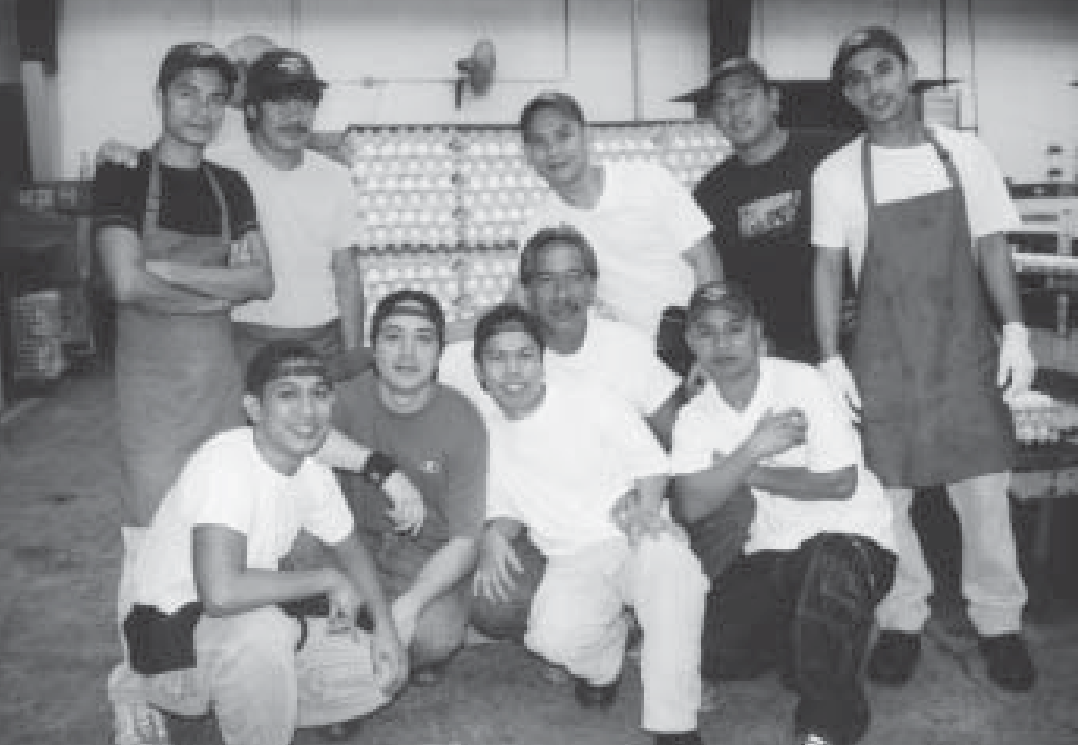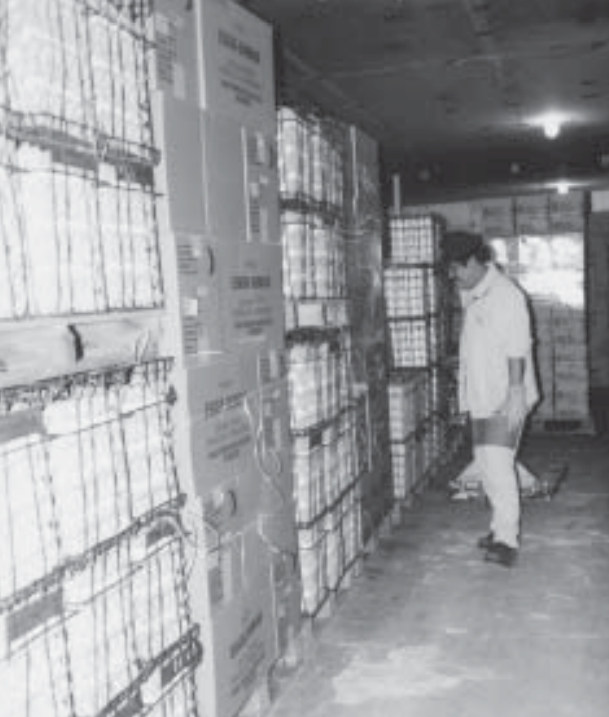HONOLULU—When you buy a fresh island egg, many people benefit. You get the freshest product for your family. Hawaii’s egg farmers have a market for their products, which helps our economy. And the employees at Eggs Hawaii, Inc. have work to do—cleaning, processing and delivering island eggs to our supermarkets.
A state inspector is present every day at the Eggs Hawaii production plant to check that quantity (size or weight), quality (grading) and sanitation requirements are met.
Owners Roland and Glen Shimabukuro take pride in providing a quality local product to consumers, and ILWU members who work at Eggs Hawaii take extraordinary care in handling the eggs that we bring home and feed our families.
Owners Roland and Glen Shimabukuro take pride in providing a quality local product to consumers, and ILWU members who work at Eggs Hawaii take extraordinary care in handling the eggs that we bring home and feed our families.



The a.m. crew at Eggs Hawaii is ready to begin processing for the day.

Mark Aguinaldo bags cleaned and sorted eggs. Fresh island eggs go from the farm to the market in about 48 hours, as opposed to mainland eggs, which may be up to three weeks old when you get them off the grocery shelves.

Saturnino “Noi” Dasalla (above) in the Eggs Hawaii “reefer” or refrigerator room. The workers and the company are very careful about maintaining the quality of their product, which means the reefer room must be kept at the ideal temperature of 40 degrees F. Strict rules are in place to prevent the temperature from fluctuating.

Eusebio Mamaclay (right) makes sure the production line runs smoothly during sorting.
Local or mainland eggs?
Ever notice how eggs are sold in Hawaii?
That eggs from the mainland have “US” stamped on each egg? That a carton of eggs marked “Large” must weigh 24 ounces or more. That a carton of eggs marked “Medium” must weigh 21 ounces or more. That a carton of eggs marked “Small” must weigh 18 ounces or more. A dozen “Extra Large” eggs must weigh at least 27 ounces.
What’s the difference between Grade A and Grade AA eggs?
The air cell in Grade A eggs shall not exceed 3/16 inch in depth and the white shall be at least reasonably firm so the yolk is only fairly well defined. The air cell in Grade AA eggs shall not exceed 1/8 inch in depth and the white shall be clear and firm so the yolk is only slightly defined when twirled before a candling light. Grade B shells may be slightly stained, and the egg white may be weak and watery.
The grading, sizing, and labeling the origin of eggs are required by Hawaii law and give consumers the assurance they are buying eggs that meet certain minimum standards.
Next time you buy a local egg, think about the 22 ILWU members working at Eggs Hawaii in Honolulu. They are the workers who sort, grade, and label the Hawaii eggs you buy in the supermarket. ◆
